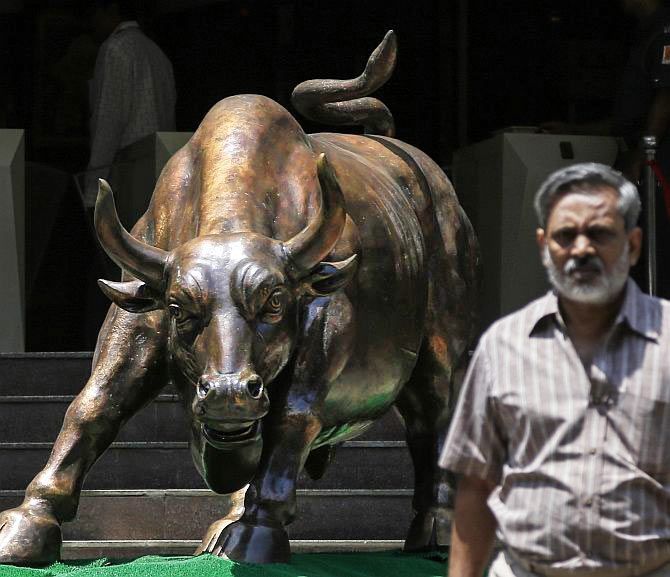 | « Back to article | Print this article |
There are many market phases when small second-rung stocks outperform big ones, notes Devangshu Datta.
 One of the more interesting techniques of day-trading involves a focus on second rung stocks. Most major industries have front-line and second-rung stocks.
One of the more interesting techniques of day-trading involves a focus on second rung stocks. Most major industries have front-line and second-rung stocks.
The front line stocks are industry leaders. These are very liquid, often listed in the derivatives segment.
They tend to be members of broad indices, owned and tracked by many institutions.
Second rung stocks are less liquid and less extensively covered.
But, the second rung tend to move in the same direction as the top rung because they are in the same industry.
The second rung stocks also tend to move with a slight lag. This allows individual day-traders to use movements in the front line stocks as a trigger signal to enter second rung stocks.
Where this pattern of slight lag holds, the trader can enter a second rung stock in the initial stage of a move.
There are quite a few constraints to this method. One is that it is difficult to short second-rung stocks and hence, the trader is effectively restricted to moves on the long side.
Second, these trades have to be settled by end of day. That means taking delivery (so no margin), or booking profits.
A third issue is that second-rung stocks are subject to circuit breakers. So, there is a ceiling on possible daily gain or loss.
Despite those restrictions, this may be a trading mode that's worth investigating.
The circuit breakers imply strict control of losses since the circuit breaker acts like an automatic stop-loss.
Again, due to the fact that these are second-rung stocks, with somewhat lower liquidity, traders can enter with relatively low amounts of capital.
The trader who is interested in this method should run through industry after industry, identifying second-rung stocks, which have high correlation with the first rung stocks in the respective industries.
It would also be useful to identify likely daily volume levels and to develop a good sense of liquidity prior to taking any trades.
This style therefore, involves trading small breakouts and trends that last for less than one session for relatively small, relatively low-risk returns.
It is almost always an uptrend that is being traded.
When playing this mode, the trader must look for micro-trends to show up at short time frames on say, 5-minute charts.
These may then be scaled up to 15 minute or 30- minute charts to confirm such a trend when it is seen in the shorter time-frame.
Small refinements can supposedly improve the strike rate and returns from this style of trading.
One filter is to focus on the smaller stocks in an industry on a day when quarterly results are expected for one of the biggest stocks.
The "sympathetic" direction of the move and the dimensions of the moves are said to be more likely to coincide on such a day.
Also, the few practitioners I know, who practice this style of trading claim that it is sometimes sensible to take delivery with a six to seven session perspective.
Can such a mode of trading be further optimised? There can be no definite answer without a lot of databasing.
If it is a robust trading method, it should be possible to set up mechanical systems for trades and it should also be possible to back-test such methods to check if the rewards are worth the risks.
There are many market phases when small second-rung stocks outperform big ones.
That should certainly offer some incentive to anybody who decides to try trading via the second-rung stocks.
The author is a technical and equity analyst.